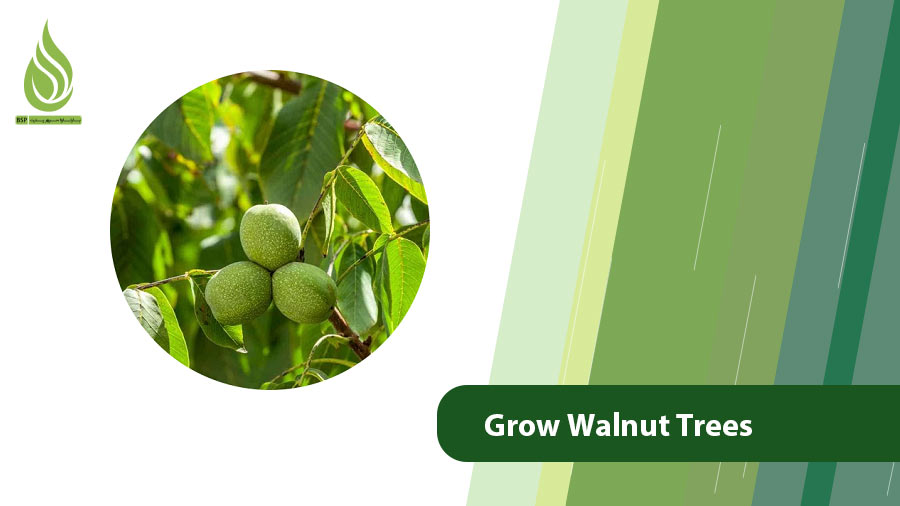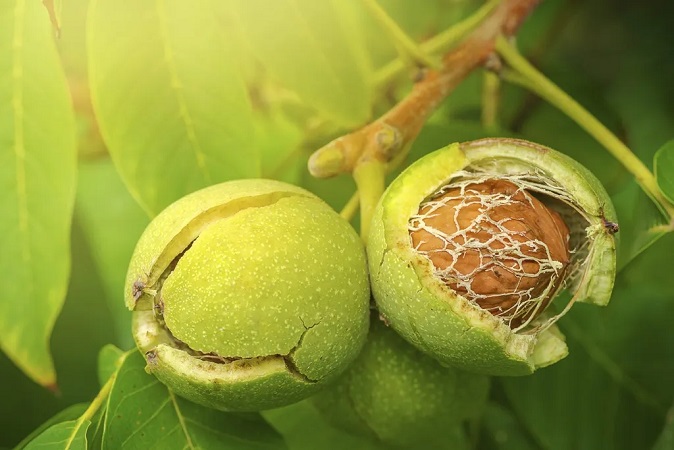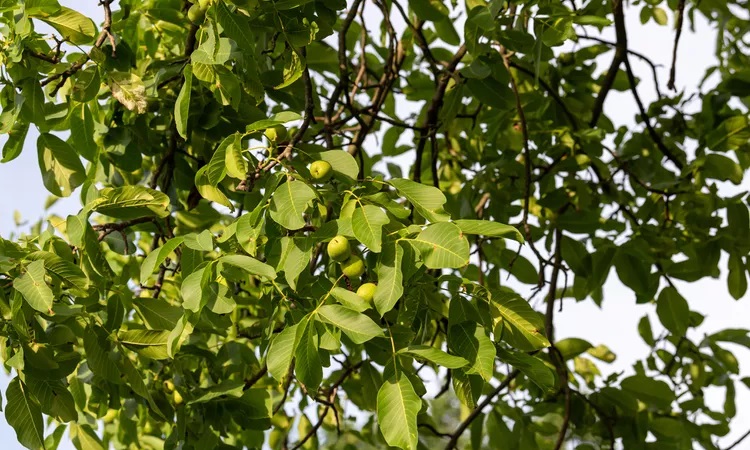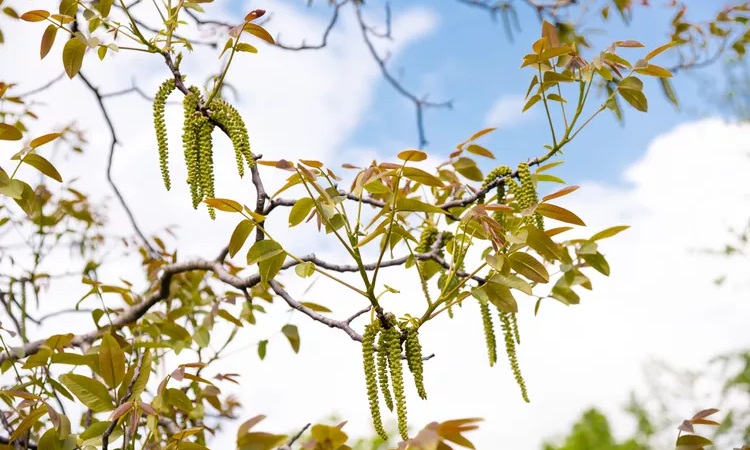
Grow Walnut Trees: Discover the Top Fertilizers for Success
Enhancing the growth and productivity of walnut trees through strategic fertilizer use is crucial. By applying organic and chemical fertilizers at the appropriate times, you can improve soil quality, fulfill the trees’ nutritional requirements, and promote the overall health and vigor of walnut trees. If you’re seeking guidance on selecting the ideal fertilizers for walnut cultivation, stay with us. This article will explore the importance of fertilizing walnut trees and recommend fertilizers tailored to fortify these valuable trees.
Why does a walnut tree need fertilization?
Fertilization is crucial for the optimal growth and sustained health of walnut trees. Here’s why:
- 1. Boosting Growth and Vitality:
- To thrive and produce bountiful yields, walnut trees depend on essential nutrients like nitrogen, phosphorus, and potassium. Sometimes, these nutrients are lacking in the soil. The right fertilizers can make up for these deficiencies, promoting robust growth and productivity.
- 2. Nutrient Replenishment:
- Throughout the growing season, walnut trees exhaust vital nutrients. Fertilizing the soil replenishes these elements, ensuring the tree remains healthy and capable of yielding fruits consistently.
- 3. Enhancing Fertility:
- Organic and mineral fertilizers not only enhance soil structure but also foster beneficial microorganisms, thereby boosting fertility levels. This enhancement translates into increased walnut yield and elevates fruit quality in terms of size, flavor, and appearance.
- 4. Ensuring Longevity and Sustainability:
- Effective fertilization not only caters to the tree’s nutritional requirements but also fortifies its roots, making it more resilient to pests and diseases. This resilience contributes to the tree’s long-term health and vitality.
- 5. Preserving Soil Fertility:
- By judiciously applying suitable fertilizers, soil structure improves, leading to enhanced fertility retention. This positive cycle results in improved yield and sustained tree health over time.
Fertilization isn’t just about feeding the tree—it’s a comprehensive approach to nurturing walnut trees for enduring health, productivity, and quality harvests.

What to Do Before Fertilizing Walnut Trees
Fertilization is pivotal for the growth and fertility of walnut trees, yet it’s just one piece of the puzzle. To cultivate robust trees that yield abundantly, laying the right foundation is key.
Here are the essential steps to maximize walnut tree growth:
Soil Testing:
Soil testing is a crucial step in understanding and meeting the unique requirements of your soil. By collecting and analyzing soil samples in specialized laboratories, valuable insights are gained to nurture your orchard effectively.
One key aspect revealed through testing is soil pH, which ideally falls between 6 to 7 for optimal nutrient absorption in walnut orchards. Adjusting soil pH levels when necessary is vital for sustained tree health and productivity.
Moreover, soil tests pinpoint deficiencies, guiding targeted fertilization efforts in sync with seasonal needs. The expertise of an agricultural specialist in interpreting these results and providing tailored fertilizer recommendations is paramount for cultivating thriving walnut trees.
Investing in soil testing and expert guidance sets the stage for robust walnut growth and ensures your orchard reaches its full potential.
Proper Planting of Walnut Seedlings:
You might find it interesting that the way walnut seedlings are planted can significantly impact their productivity in the future. Acquiring healthy and high-quality seedlings and planting them at the right time ensures better health and fertility of walnut trees in the long run. Proper pruning also plays a crucial role in increasing tree yield. Pruning walnut trees promotes light exposure to all branches, fosters proper tree shaping during growth stages, and enhances tree growth overall.
Removing Weeds and Soil Preparation:
Ensuring the ground is ready for fertilizing walnut trees is essential for their health and growth. Here’s how to do it effectively:
Begin by removing weeds from the area around the tree. If weed growth is dense, consider turning over the soil to clear it effectively. The soil composition around walnut trees should ideally be a balanced mix of loam, sand, and silt, creating a moderately heavy soil blend.
By taking these steps to clear the ground and establish the right soil conditions, you pave the way for successful fertilization, providing your walnut trees with the optimal environment they need to thrive and flourish.

Choosing the Ideal Fertilizer for Walnut Trees
Selecting the right fertilizer for walnut trees is crucial for their overall health and development. Fertilizers suitable for walnut trees fall into two main categories: organic and chemical fertilizers. By applying these fertilizers correctly and at the right times, you can enhance soil quality and fulfill the nutritional requirements of the trees.
It’s important to note that fertilizing walnut trees is an ongoing process rather than a one-time event. Promptly addressing any deficiencies observed in the trees ensures they receive the necessary nutrients for sustained growth and vitality.
Chemical Fertilizers Needed for Walnut Trees
Chemical and mineral fertilizers are essential for fulfilling the nutritional requirements of walnut trees. When applied correctly and at the right times, these fertilizers significantly enhance the yield and quality of walnut trees. While there is a diverse range of chemical fertilizers available, not all are conducive to optimal walnut tree growth.
Key minerals provided to walnut trees through chemical fertilizers include:
- Nitrogen (e.g., Ammonium Sulfate): The key element for plant growth and green foliage, aiding in tree growth, increasing yield, and improving fruit quality in walnut trees.
- Phosphorus (e.g., Single Superphosphate or Triple Superphosphate): Enhances root development, aids in sunlight absorption, and assists in photosynthesis, energy production, and cell division.
- Potassium (e.g., Potassium Sulfate or Potassium Nitrate): Regulates cell activities, boosts plant resilience, strengthens tree structure, and facilitates sugar and starch transport within the plant.
Nitrogen fertilizers stand out as one of the most extensively utilized fertilizers in agriculture, including walnut orchards. They are especially recommended for boosting the growth of walnut seedlings. Nitrogen is a pivotal nutrient that aids in the formation of proteins, amino acids, and chlorophyll crucial for plant development. This element significantly contributes to leaf and stem growth, particularly in walnut trees.
For walnut trees, nitrogen is indispensable for their initial growth, fortifying stems and leaves. Proper nitrogen application not only fosters leaf and trunk expansion but also enhances the whitening of walnut kernels. Ammonium Sulfate is a top-tier nitrogen fertilizer choice due to its balanced nitrogen and sulfur content.
Apart from nitrogen, walnut trees may necessitate other essential mineral elements like zinc, manganese, copper, boron, iron, and micronutrients. While walnut trees typically require micronutrients in small quantities, their role in tree growth should not be underestimated. These micronutrients are often combined with other fertilizers and applied to the soil as needed to support the overall growth of walnut trees.

Organic Fertilizers Essential for Walnut Trees
Organic fertilizers stand out as indispensable resources for nurturing walnut trees. Their gradual nutrient release enriches the soil steadily, ensuring a sustained supply of essential resources. Typically applied post-harvest and before spring, organic fertilizers play a vital role in maintaining root health during colder seasons. Beyond nourishment, they aid in moisture retention, nutrient availability, and soil structure enhancement.
Organic fertilizers encompass three primary categories: manures, composts, and vermicomposts. While vermicomposts boast rich nitrogen, phosphorus, and potassium content, they are often pricier compared to other organic options. For walnut trees, decomposed manures like cow, sheep, horse, and poultry manures are popular choices. Compost, too, proves highly beneficial, consistently enhancing soil structure with each application.
Method and Timing of Fertilizing Walnut Trees
Fertilizing is beneficial for tree growth and increasing tree productivity; however, other factors influence this process. To optimize the yield of walnut trees, attention should be paid to the following:
Attention to Fertilizing Timing:
Throughout the year, trees go through stages of budding, flowering, fruiting, fruit harvest, and dormancy. At each of these stages, fertilization is necessary based on the plant’s needs. The requirements for each stage should be met before the commencement of that stage; for instance, if a plant needs fertilization for fruiting, fertilization should be done before the fruiting season begins. According to the growth stages of walnut trees, fertilization takes place at the end of winter, early spring, during the fruiting season, and thereafter.
Fertilizing at the end of winter and early spring promotes better budding in trees. The most important fertilizer used during this period is nitrogen fertilizer, which enhances the formation of buds, leaves, branches, and roots.

Before the onset of spring, fertilization is typically carried out to improve flowering in walnut trees. Fertilization is usually paused during the flowering season because any action could potentially harm the blossoms.
After the end of the flowering season and in early summer when we have reached the fruiting stage, fertilization can be continued. During this season, fertilization is done to preserve the fruits. Calcium-rich, nitrogen-rich, and phosphorus-rich fertilizers are beneficial at this stage.
The final stage for fertilizing walnut trees is after fruit harvest. If the soil around the walnut tree is nutrient deficient, it is better to fertilize once in the fall and after fruit harvest. During this time, the tree starts storing nutrients, and fertilization can be done based on its needs. The nutrient reserves in the walnut tree lead to budding in the new season. Fertilizing at the end of the season not only aids in nutrient storage but also helps prevent diseases.
Fertilizing Walnut Trees
Fertilizing walnut trees should never be done during the flowering season as it can lead to the loss of blossoms or that year’s yield. Additionally, fertilizer should not be directly poured under the tree canopy. Fertilizing walnut trees using the drill hole method is ideal. To fertilize using the drill hole method, create shallow holes spaced 0.5 to 1 meter apart in the shaded area under the tree with a depth of around 15 centimeters and pour the fertilizer into them. Then, water the soil to ensure the minerals reach the roots in a dissolved form. The drill hole method is suitable for the dormant season of the tree (fall and winter). The best fertilizers for this period are animal manure and compost. Fertilizing with organic fertilizers in the fall helps increase root resilience to cold and frost.

The fertilizer used in the drip hole method must be decomposed; this is crucial because undecomposed fertilizer generates heat. The heat produced by decomposition can harm the tree roots. Additionally, the decomposition process requires nitrogen, which means the nitrogen present in the soil is utilized for the decomposition process.
During the spring and summer seasons, you can top-dress the soil with leaf mulch. This not only enriches the soil but also helps retain soil moisture. If you are using liquid fertilizer to nourish walnut trees, you can apply it to the soil through foliar spraying or irrigation methods.
Fertilizer Amount
The amount of fertilizer you apply to the soil should be tailored to the soil’s needs. Soil testing reveals the deficiencies in walnut tree soil and determines the necessary fertilizers for application. The quantity of fertilizer is also determined in this process. In some fertile soils, annual fertilization may not be necessary, with fertilization occurring once every two or three years. Typically, in mature trees, every hectare of walnut orchard requires 500-200 kilograms of organic and chemical fertilizers.
Always bear in mind that even if you use the best chemical fertilizers for walnut trees, excessive fertilization can harm the roots and lead to nutrient deficiencies. The amount of fertilizer used for walnut trees varies based on the tree’s age and requirements. Therefore, before taking any action, be sure to consult agricultural experts.
